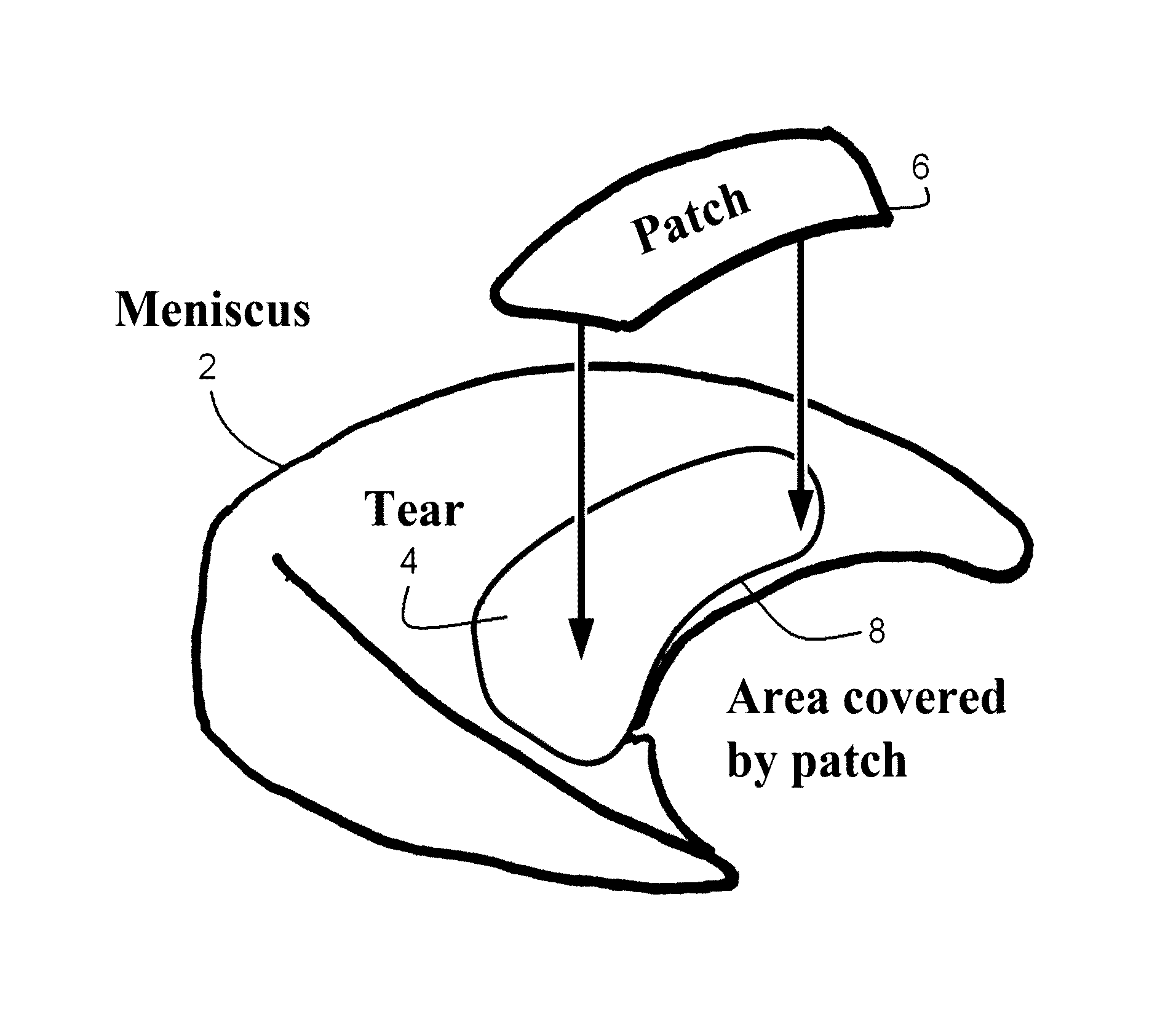Crosslinker enhanced repair of knee meniscus
a technology of crosslinker and knee meniscus, which is applied in the field of protein crosslinking reagents, can solve the problems of reducing the operating time and the risk of complications of patients, and general not as strong as sutures
- Summary
- Abstract
- Description
- Claims
- Application Information
AI Technical Summary
Benefits of technology
Problems solved by technology
Method used
Image
Examples
example 1
[0047]A radial tear of a human knee meniscus may be repaired by the present methods and devices in a number of embodiments. Some embodiments involve implementation of standard arthroscopic procedures for meniscal repair using darts containing a crosslinking and a pH modulating reagent. The fixation darts are manufactured as follows. One gram of 50:50 poly-D,L-lactide-co-glycolide polymer (average molecular weight of 53 kDa) is dissolved in 6 ml of acetone and then precipitated by addition of 10 ml of pure ethanol. Two hundred mg of sodium bicarbonate and 6 mg of genipin crosslinker are added to and mixed with the precipitated polymer prior to using the mixture to mould three meniscal dart devices which are dried under vacuum to solidify the polymer and remove the solvents.
example 2
[0048]Some embodiments involve implementation of standard arthroscopic procedures for meniscal repair using biodegradable sutures which are produced by extruding polydioxanone in the presence of 10% (w / w) of a 40% solution of methylglyoxal.
example 3
[0049]Some embodiments involve direct injection into the meniscal tissue in the region of the tear a buffered crosslinking reagent. The injection may be administered using standard sterile intracapsular injection techniques and fluoroscopic, arthroscopic, or any equivalent or superior imaging technology and techniques that allow for simultaneous injections. The injected solution contains 40 mM genipin in a buffer consisting of 50 mM 3-[4-(2-Hydroxyethyl)-1-piperazinyl]propanesulfonic acid (EPPS) and 50 mM sodium triphosphate at a pH of 8.0. The patient should avoid flexion-extension or weight bearing of the knee for a period of time following the injection, approximately 1 hour, to allow for diffusion of the reagent and initial crosslink formation within the meniscal tissue, followed by a period of light movement and intermittent weight bearing to encourage further movement through the tissue of unreacted reagent and to aid in the introduction of oxygen to expedite the crosslinking ...
PUM
 Login to View More
Login to View More Abstract
Description
Claims
Application Information
 Login to View More
Login to View More - R&D
- Intellectual Property
- Life Sciences
- Materials
- Tech Scout
- Unparalleled Data Quality
- Higher Quality Content
- 60% Fewer Hallucinations
Browse by: Latest US Patents, China's latest patents, Technical Efficacy Thesaurus, Application Domain, Technology Topic, Popular Technical Reports.
© 2025 PatSnap. All rights reserved.Legal|Privacy policy|Modern Slavery Act Transparency Statement|Sitemap|About US| Contact US: help@patsnap.com

